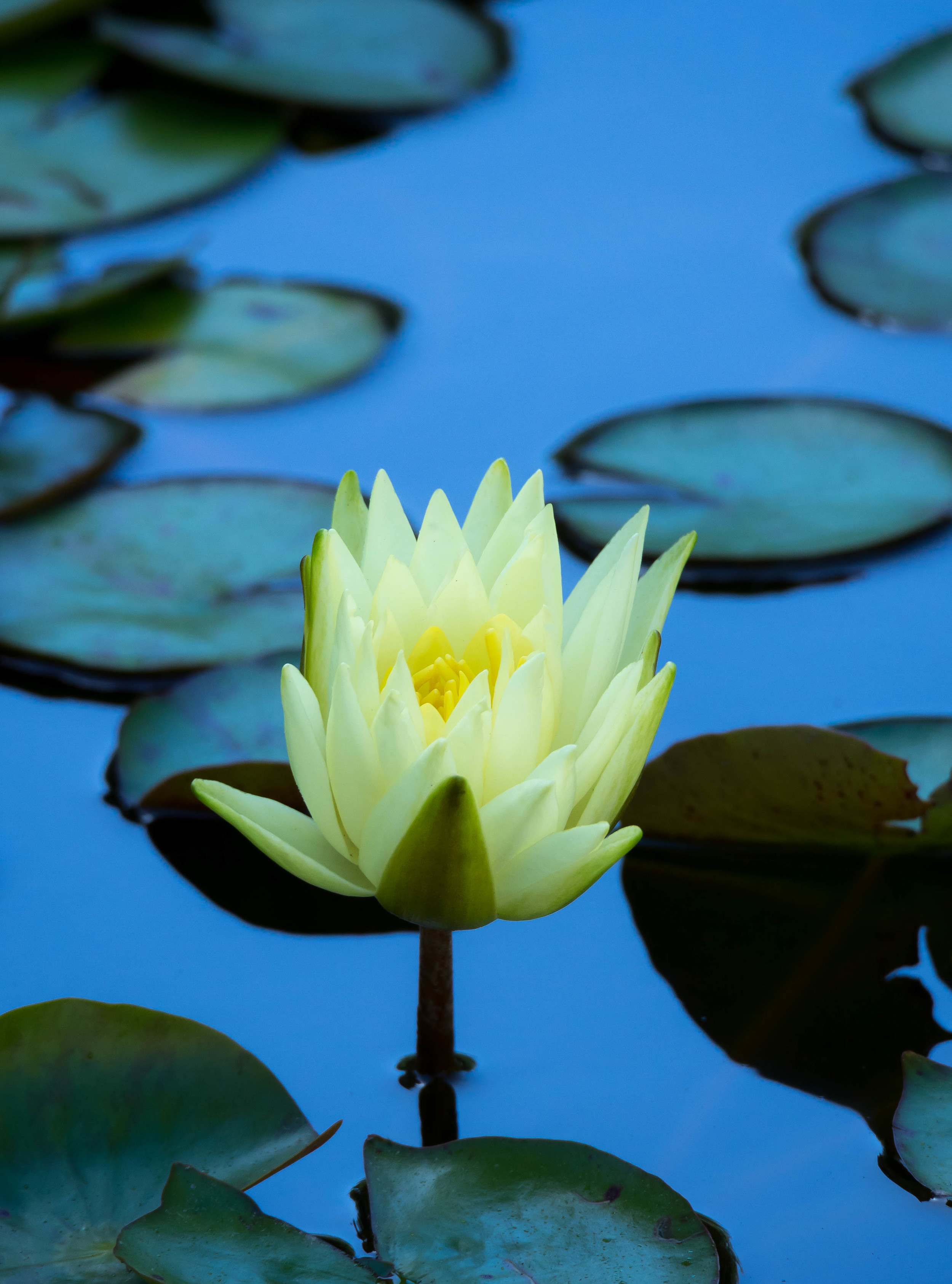I spent the morning sitting in on a my first familiarisation day with Darren. We may be going to start a school for photography and today was with our first customer.
Two tutors and one student can get a little intense, so I wandered. The day was held in a park just down the road from where I used to live and I must admit that I never really gave the place any real effort when it was close. The fountain in the middle of the square is well populated with water lilies and although I find them alluring I have also found them frustrating. Photographing things on water often comes down to the quality of the reflections that they cast and the reflections that surround them. Glare, poor quality reflections, and distracting backgrounds tend to lower the value of water images and that was often the case here. This day, the large fountain in the middle of the pond created a deep shadow with just a shaft of light hitting this lily. Some mild post processing was done to remove the odd stray point of light, and whole image was darkened to reveal the detail in the flower, other than that it's much as shot. When you are used to how your cameras' sensor and your post processing will respond to different lighting situations, you can usually depend on the results to be consistently as you expect. The only way to know though is to shoot, look at the results and shoot again. This is why it's important to develop your post processing workflow to be clean, short (less is better) and consistent and to get to know your cameras' patterns of response to different lighting situations* (Ansel Adams would call this "pre visualisation"). Once you get to know what your camera can and can't do, but especially what it does well, your photography can become more deliberately expressive. When I cut out Canon, Fuji and Sony from my kit, I knew I had sacrificed some looks and capabilities, but I also hoped my awareness of the looks available to me from the Olympus cameras would be sharper. So far I am happy.
* The OMD EM5 mk1 cameras that I use generally take a slightly dark and contrasty image as set. Many users brighten their images a little, but I don't as I prefer the look as it reminds me of very clean, responsive colour slide film (part Kodak, part Fuji). When comparing Olympus to the Fuji rendering, my frustration came from the Olympus cameras inability to get the brilliant "Glassy" look of the Fuji's. After a while I found the look (mostly a product of their jpeg engine) to be a bit fickle and sometimes artificial. I would be known to call the olympus images "dull" or lacking in sparkle. That was a bit unfair as their only crime was accuracy, no Hollywood here, just true to life documentary colour. After some fiddling I found I could also get that brilliant look, within the limits of reasonable accuracy, with my Olympus files.



